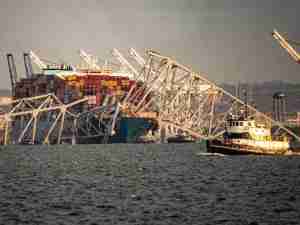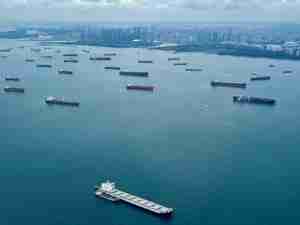Key insights:
1 Ocean rates continued to fall this week, despite Golden Week approaching and carriers starting to cancel sailings.
2 The decrease in demand is also pushing ocean charter rates down. Falling spot rates could put pressure on some smaller carriers stuck with expensive charter rates taken on back when transpacific spot rates were sky high
3 Transpacific air volumes have declined since the start of the year and rates in early September were more than 50% lower than last year. But rates remain about double the norm, and July volumes were still 10% higher than pre-pandemic levels, suggesting that – like in ocean – volumes and rates are coming down from last year’s extremes but are still quite elevated.
Asia-US Rates:
• Asia-US West Coast prices (FBX01 Daily) fell 17% to $3,241/FEU. This rate is 80% lower than the same time last year.
• Asia-US East Coast prices (FBX03 Daily) decreased 14% to $7,326/FEU, and are 61% lower than rates for this week last year.
Analysis
Falling demand for ocean freight, whatever the drivers – inflation, fears of a looming recession, an extremely early peak season – is making capacity more readily available than it has been in a very long time and rates continued to fall this week as a result.
The Golden Week holiday in China that begins in a week will pause a lot of manufacturing, and the lead up typically causes some increase in ocean demand. But Golden Week’s approach and carriers starting to cancel sailings to try and keep vessels full have not stopped the rate slide, as transpacific prices dropped double digits to both coasts since last week, and Asia - N. Europe rates fell 8%.
With this year’s ocean peak season now clearly behind us, the coming weeks could indicate what the new floor for spot rates will be this year, and how much above 2019 levels capacity management, congestion, and volumes (still expected to stay above 2019 levels) can keep container prices.
The decrease in demand has also resulted in a sudden drop in ocean charter rates – the price carriers pay to lease some of the ships they operate. Falling spot rates could put pressure on some smaller carriers who are now stuck with expensive charter rates taken on to offer new transpacific services back when spot rates were sky high.
Labor disputes remain a threat to ocean logistics, though. Last week’s planned rail strike in the US was averted at the last minute. Meanwhile, West Coast port labor negotiations have apparently stalled, as workers at UK ports begin new strikes this week.
In air cargo, transpacific volumes have been in decline since the start of the year and Freightos Air Index rates in early September were more than 50% lower than this time last year. But air cargo rates remain about double the norm, and the latest data (from July) saw volumes still 10% higher than pre-pandemic levels, suggesting that – like in ocean – volumes and rates are coming down from last year’s extremes but, for now, remain elevated.











